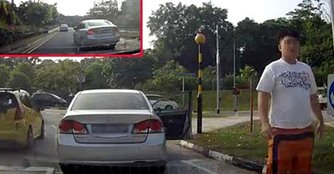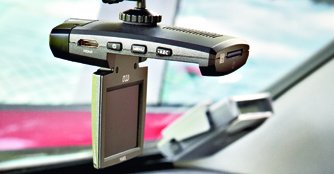In-car cameras purchasing tips
27 Jan 2015|52,295 views
Accidents can happen, no matter how much effort we put into avoiding them. All it takes is for another motorist to make
a careless error, and even the most skilled and careful driver
can end up in a fender-bender.
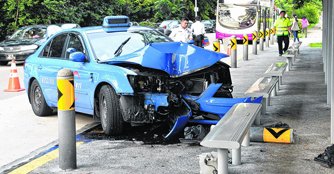
 After the Motor Claims Framework was introduced in 2008, all policy holders must report every accident, regardless of the severity, to their insurer
After the Motor Claims Framework was introduced in 2008, all policy holders must report every accident, regardless of the severity, to their insurer
Minor mishaps used to be less stressful. If the incident left the vehicles in question with minor scratches or small dents, the matter could be quickly (and privately) settled if one party compensated the other. You only needed to inform your insurer if the damage was bad.
But things changed. In 2008, the General Insurance
Association of Singapore (GIA) introduced the Motor Claims Framework (MCF), which requires all policyholders to report every accident - no matter how minor - to their insurer.
This regulation came about as a result of the growing number of drivers who would later file exaggerated claims for 'grievous injuries' sustained in accidents.
To cope with the higher payouts that were affecting their bottom line, insurance firms started charging steeper premiums to all motorists - even those who had never made a claim weren't spared.
For protection, drivers began installing in-car cameras in their vehicles, using the recorded footage (which is typically stored on SD or micro SD cards) to combat fraudulent claims filed against them by unscrupulous parties.
a careless error, and even the most skilled and careful driver
can end up in a fender-bender.

Minor mishaps used to be less stressful. If the incident left the vehicles in question with minor scratches or small dents, the matter could be quickly (and privately) settled if one party compensated the other. You only needed to inform your insurer if the damage was bad.
But things changed. In 2008, the General Insurance
Association of Singapore (GIA) introduced the Motor Claims Framework (MCF), which requires all policyholders to report every accident - no matter how minor - to their insurer.
This regulation came about as a result of the growing number of drivers who would later file exaggerated claims for 'grievous injuries' sustained in accidents.
To cope with the higher payouts that were affecting their bottom line, insurance firms started charging steeper premiums to all motorists - even those who had never made a claim weren't spared.
For protection, drivers began installing in-car cameras in their vehicles, using the recorded footage (which is typically stored on SD or micro SD cards) to combat fraudulent claims filed against them by unscrupulous parties.
The popularity of in-car cameras also took off following that infamous Ferrari accident - which was captured by a taxi's in-car recorder - at the junction of Victoria Street and Rochor Road last year.
Also, in-car cameras have been a great aid to authorities in nabbing errant drivers. One such example is the 'Honda Civic road bully' case, where the driver was caught driving recklessly on two videos.
Here are some handy tips to help you decide which camera to purchase:
Tip 1: Pixels Matter
The first and most important consideration when it comes to choosing an in-car camera is its resolution, which is expressed in terms of the number of pixels per square inch. A device with a 1080i format is definitely better than one only capable of 720i, because having more pixels per square inch means clearer videos.
It would be best, however, to opt for a High-Definition (HD) camera, which has a resolution of 1080p. The difference between 1080i and 1080p lies in their playback - the 'i' rating in the former refers to interlaced video, while the 'p' in the latter refers to progressive scan.
Also, in-car cameras have been a great aid to authorities in nabbing errant drivers. One such example is the 'Honda Civic road bully' case, where the driver was caught driving recklessly on two videos.
Here are some handy tips to help you decide which camera to purchase:
Tip 1: Pixels Matter
The first and most important consideration when it comes to choosing an in-car camera is its resolution, which is expressed in terms of the number of pixels per square inch. A device with a 1080i format is definitely better than one only capable of 720i, because having more pixels per square inch means clearer videos.
It would be best, however, to opt for a High-Definition (HD) camera, which has a resolution of 1080p. The difference between 1080i and 1080p lies in their playback - the 'i' rating in the former refers to interlaced video, while the 'p' in the latter refers to progressive scan.
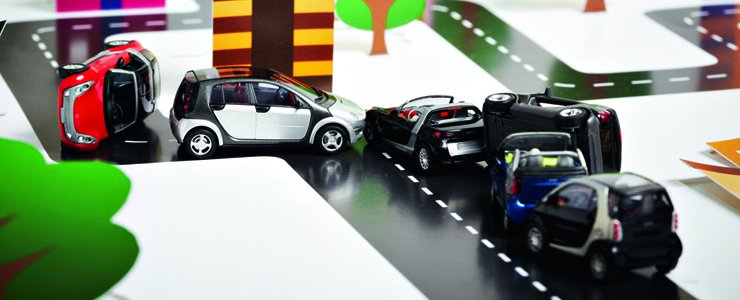 |
For non-geeks who rarely venture into the 'hardware zone', interlaced video tends to flicker when replayed in slow motion, while progressive scan delivers sharper images, especially when it comes to fast-moving or night sequences.
One can imagine the advantages of HD, especially when the footage is used as evidence. HD-format cameras can cost as little as $150.
Tip 2: Video Loop recording
Most in-car cameras in the market come with a looping function, where the camera automatically records over the oldest file when the memory card fills up. Check to see that your camera has this feature as it ensures the most recent footage is captured in the camera's memory device.
Tip 3: Vantage Points
Another vital feature to consider is how wide the camera's lens angle is. Because you want to capture as much as possible, opt for a device with a field of vision of at least 120 degrees.
If you mount the camera in the middle of your windscreen just in front of the rear view mirror, you should at least be able to see a bit of space on either side of your vehicle's bonnet. Alternatively, you can position the camera higher up on the windscreen to expand the viewing angle.
Tip 4: Motion Detection/G-Sensor
For car owners concerned with vehicle security, it would be wise to invest in a camera that can be activated via its motion sensor (also called G-Sensor). Basically, the camera stays 'asleep' in the Parking mode and only 'wakes up' and begins recording when any movement is detected, such as a knock on the door or windscreen. This could prove useful in helping nab vandals keen on 'sharing' their artwork with vehicle owners.
One can imagine the advantages of HD, especially when the footage is used as evidence. HD-format cameras can cost as little as $150.
Tip 2: Video Loop recording
Most in-car cameras in the market come with a looping function, where the camera automatically records over the oldest file when the memory card fills up. Check to see that your camera has this feature as it ensures the most recent footage is captured in the camera's memory device.
Tip 3: Vantage Points
Another vital feature to consider is how wide the camera's lens angle is. Because you want to capture as much as possible, opt for a device with a field of vision of at least 120 degrees.
If you mount the camera in the middle of your windscreen just in front of the rear view mirror, you should at least be able to see a bit of space on either side of your vehicle's bonnet. Alternatively, you can position the camera higher up on the windscreen to expand the viewing angle.
Tip 4: Motion Detection/G-Sensor
For car owners concerned with vehicle security, it would be wise to invest in a camera that can be activated via its motion sensor (also called G-Sensor). Basically, the camera stays 'asleep' in the Parking mode and only 'wakes up' and begins recording when any movement is detected, such as a knock on the door or windscreen. This could prove useful in helping nab vandals keen on 'sharing' their artwork with vehicle owners.
The G-Sensor also records the movement of the vehicle in three axes - up and down, left and right, forward and backward. This data will help to paint a better picture in the event of an accident.
The drawback to this function is that most cameras have a short battery life, and hooking them up to your car could render your vehicle's battery flat the following day. Either way, this means limited recording times. To solve this issue, many owners use secondary sources, such as additional batteries, to power the cameras.
Tip 5: Built-in GPS/Wi-Fi
Though not absolutely necessary, some firms have introduced cameras that are GPS-enabled, to help in more accurately pinpointing a vehicle's location and even its speed when an
accident occurs.
Some of the newer models in the market also boast built-in Wi-Fi to allow users to view and download videos wirelessly. Although this feature makes post-recording operation much more convenient, we reckon it is also a 'good-to-have' and not a 'must-have'.
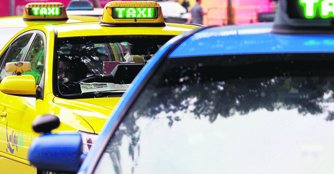
 To give drivers a greater 'peace of mind', ComfortDelGro, the largest taxi operator in Singapore, has installed in-car cameras to its fleet of 16,600 taxis
To give drivers a greater 'peace of mind', ComfortDelGro, the largest taxi operator in Singapore, has installed in-car cameras to its fleet of 16,600 taxis
Tip 6: Date and Time Stamp
This feature embeds the date and time, two vital details that could be used to verify the recorded incident, onto the video. Remember to turn on the feature when you configure your newly-purchased camera.
Whichever in-car camera you choose, remember that the gadget is a double-edged sword: the recorded footage could clear you
of any wrongdoing, but it could also put you clearly in the wrong.
Here are some related articles that might interest you
Recommended car accessory & car camera workshops to make your car practical
Here are 8 car accessories & audio workshops that are open even on Sundays
Five car workshops that open till late for your automotive needs
Five workshops with the most spectacular lounges
Car aircon not cold enough? Here are 10 best aircon repair & servicing workshops
Click for more user reviews and production information on all in-car cameras in Singapore, or visit our car accessories product guide.
The drawback to this function is that most cameras have a short battery life, and hooking them up to your car could render your vehicle's battery flat the following day. Either way, this means limited recording times. To solve this issue, many owners use secondary sources, such as additional batteries, to power the cameras.
Tip 5: Built-in GPS/Wi-Fi
Though not absolutely necessary, some firms have introduced cameras that are GPS-enabled, to help in more accurately pinpointing a vehicle's location and even its speed when an
accident occurs.
Some of the newer models in the market also boast built-in Wi-Fi to allow users to view and download videos wirelessly. Although this feature makes post-recording operation much more convenient, we reckon it is also a 'good-to-have' and not a 'must-have'.

Tip 6: Date and Time Stamp
This feature embeds the date and time, two vital details that could be used to verify the recorded incident, onto the video. Remember to turn on the feature when you configure your newly-purchased camera.
Whichever in-car camera you choose, remember that the gadget is a double-edged sword: the recorded footage could clear you
of any wrongdoing, but it could also put you clearly in the wrong.
Here are some related articles that might interest you
Recommended car accessory & car camera workshops to make your car practical
Here are 8 car accessories & audio workshops that are open even on Sundays
Five car workshops that open till late for your automotive needs
Five workshops with the most spectacular lounges
Car aircon not cold enough? Here are 10 best aircon repair & servicing workshops
Click for more user reviews and production information on all in-car cameras in Singapore, or visit our car accessories product guide.
Accidents can happen, no matter how much effort we put into avoiding them. All it takes is for another motorist to make
a careless error, and even the most skilled and careful driver
can end up in a fender-bender.

 After the Motor Claims Framework was introduced in 2008, all policy holders must report every accident, regardless of the severity, to their insurerMinor mishaps used to be less stressful. If the incident left the vehicles in question with minor scratches or small dents, the matter could be quickly (and privately) settled if one party compensated the other. You only needed to inform your insurer if the damage was bad.
After the Motor Claims Framework was introduced in 2008, all policy holders must report every accident, regardless of the severity, to their insurerMinor mishaps used to be less stressful. If the incident left the vehicles in question with minor scratches or small dents, the matter could be quickly (and privately) settled if one party compensated the other. You only needed to inform your insurer if the damage was bad.
But things changed. In 2008, the General Insurance
Association of Singapore (GIA) introduced the Motor Claims Framework (MCF), which requires all policyholders to report every accident - no matter how minor - to their insurer.
This regulation came about as a result of the growing number of drivers who would later file exaggerated claims for 'grievous injuries' sustained in accidents.
To cope with the higher payouts that were affecting their bottom line, insurance firms started charging steeper premiums to all motorists - even those who had never made a claim weren't spared.
For protection, drivers began installing in-car cameras in their vehicles, using the recorded footage (which is typically stored on SD or micro SD cards) to combat fraudulent claims filed against them by unscrupulous parties.
a careless error, and even the most skilled and careful driver
can end up in a fender-bender.

But things changed. In 2008, the General Insurance
Association of Singapore (GIA) introduced the Motor Claims Framework (MCF), which requires all policyholders to report every accident - no matter how minor - to their insurer.
This regulation came about as a result of the growing number of drivers who would later file exaggerated claims for 'grievous injuries' sustained in accidents.
To cope with the higher payouts that were affecting their bottom line, insurance firms started charging steeper premiums to all motorists - even those who had never made a claim weren't spared.
For protection, drivers began installing in-car cameras in their vehicles, using the recorded footage (which is typically stored on SD or micro SD cards) to combat fraudulent claims filed against them by unscrupulous parties.
The popularity of in-car cameras also took off following that infamous Ferrari accident - which was captured by a taxi's in-car recorder - at the junction of Victoria Street and Rochor Road last year.
Also, in-car cameras have been a great aid to authorities in nabbing errant drivers. One such example is the 'Honda Civic road bully' case, where the driver was caught driving recklessly on two videos.
Here are some handy tips to help you decide which camera to purchase:
Tip 1: Pixels Matter
The first and most important consideration when it comes to choosing an in-car camera is its resolution, which is expressed in terms of the number of pixels per square inch. A device with a 1080i format is definitely better than one only capable of 720i, because having more pixels per square inch means clearer videos.
It would be best, however, to opt for a High-Definition (HD) camera, which has a resolution of 1080p. The difference between 1080i and 1080p lies in their playback - the 'i' rating in the former refers to interlaced video, while the 'p' in the latter refers to progressive scan.
Also, in-car cameras have been a great aid to authorities in nabbing errant drivers. One such example is the 'Honda Civic road bully' case, where the driver was caught driving recklessly on two videos.
Here are some handy tips to help you decide which camera to purchase:
Tip 1: Pixels Matter
The first and most important consideration when it comes to choosing an in-car camera is its resolution, which is expressed in terms of the number of pixels per square inch. A device with a 1080i format is definitely better than one only capable of 720i, because having more pixels per square inch means clearer videos.
It would be best, however, to opt for a High-Definition (HD) camera, which has a resolution of 1080p. The difference between 1080i and 1080p lies in their playback - the 'i' rating in the former refers to interlaced video, while the 'p' in the latter refers to progressive scan.
For non-geeks who rarely venture into the 'hardware zone', interlaced video tends to flicker when replayed in slow motion, while progressive scan delivers sharper images, especially when it comes to fast-moving or night sequences.
One can imagine the advantages of HD, especially when the footage is used as evidence. HD-format cameras can cost as little as $150.
Tip 2: Video Loop recording
Most in-car cameras in the market come with a looping function, where the camera automatically records over the oldest file when the memory card fills up. Check to see that your camera has this feature as it ensures the most recent footage is captured in the camera's memory device.
Tip 3: Vantage Points
Another vital feature to consider is how wide the camera's lens angle is. Because you want to capture as much as possible, opt for a device with a field of vision of at least 120 degrees.
If you mount the camera in the middle of your windscreen just in front of the rear view mirror, you should at least be able to see a bit of space on either side of your vehicle's bonnet. Alternatively, you can position the camera higher up on the windscreen to expand the viewing angle.
Tip 4: Motion Detection/G-Sensor
For car owners concerned with vehicle security, it would be wise to invest in a camera that can be activated via its motion sensor (also called G-Sensor). Basically, the camera stays 'asleep' in the Parking mode and only 'wakes up' and begins recording when any movement is detected, such as a knock on the door or windscreen. This could prove useful in helping nab vandals keen on 'sharing' their artwork with vehicle owners.
One can imagine the advantages of HD, especially when the footage is used as evidence. HD-format cameras can cost as little as $150.
Tip 2: Video Loop recording
Most in-car cameras in the market come with a looping function, where the camera automatically records over the oldest file when the memory card fills up. Check to see that your camera has this feature as it ensures the most recent footage is captured in the camera's memory device.
Tip 3: Vantage Points
Another vital feature to consider is how wide the camera's lens angle is. Because you want to capture as much as possible, opt for a device with a field of vision of at least 120 degrees.
If you mount the camera in the middle of your windscreen just in front of the rear view mirror, you should at least be able to see a bit of space on either side of your vehicle's bonnet. Alternatively, you can position the camera higher up on the windscreen to expand the viewing angle.
Tip 4: Motion Detection/G-Sensor
For car owners concerned with vehicle security, it would be wise to invest in a camera that can be activated via its motion sensor (also called G-Sensor). Basically, the camera stays 'asleep' in the Parking mode and only 'wakes up' and begins recording when any movement is detected, such as a knock on the door or windscreen. This could prove useful in helping nab vandals keen on 'sharing' their artwork with vehicle owners.
The G-Sensor also records the movement of the vehicle in three axes - up and down, left and right, forward and backward. This data will help to paint a better picture in the event of an accident.
The drawback to this function is that most cameras have a short battery life, and hooking them up to your car could render your vehicle's battery flat the following day. Either way, this means limited recording times. To solve this issue, many owners use secondary sources, such as additional batteries, to power the cameras.
Tip 5: Built-in GPS/Wi-Fi
Though not absolutely necessary, some firms have introduced cameras that are GPS-enabled, to help in more accurately pinpointing a vehicle's location and even its speed when an
accident occurs.
Some of the newer models in the market also boast built-in Wi-Fi to allow users to view and download videos wirelessly. Although this feature makes post-recording operation much more convenient, we reckon it is also a 'good-to-have' and not a 'must-have'.

 To give drivers a greater 'peace of mind', ComfortDelGro, the largest taxi operator in Singapore, has installed in-car cameras to its fleet of 16,600 taxis
To give drivers a greater 'peace of mind', ComfortDelGro, the largest taxi operator in Singapore, has installed in-car cameras to its fleet of 16,600 taxis
Tip 6: Date and Time Stamp
This feature embeds the date and time, two vital details that could be used to verify the recorded incident, onto the video. Remember to turn on the feature when you configure your newly-purchased camera.
Whichever in-car camera you choose, remember that the gadget is a double-edged sword: the recorded footage could clear you
of any wrongdoing, but it could also put you clearly in the wrong.
Here are some related articles that might interest you
Recommended car accessory & car camera workshops to make your car practical
Here are 8 car accessories & audio workshops that are open even on Sundays
Five car workshops that open till late for your automotive needs
Five workshops with the most spectacular lounges
Car aircon not cold enough? Here are 10 best aircon repair & servicing workshops
Click for more user reviews and production information on all in-car cameras in Singapore, or visit our car accessories product guide.
The drawback to this function is that most cameras have a short battery life, and hooking them up to your car could render your vehicle's battery flat the following day. Either way, this means limited recording times. To solve this issue, many owners use secondary sources, such as additional batteries, to power the cameras.
Tip 5: Built-in GPS/Wi-Fi
Though not absolutely necessary, some firms have introduced cameras that are GPS-enabled, to help in more accurately pinpointing a vehicle's location and even its speed when an
accident occurs.
Some of the newer models in the market also boast built-in Wi-Fi to allow users to view and download videos wirelessly. Although this feature makes post-recording operation much more convenient, we reckon it is also a 'good-to-have' and not a 'must-have'.

Tip 6: Date and Time Stamp
This feature embeds the date and time, two vital details that could be used to verify the recorded incident, onto the video. Remember to turn on the feature when you configure your newly-purchased camera.
Whichever in-car camera you choose, remember that the gadget is a double-edged sword: the recorded footage could clear you
of any wrongdoing, but it could also put you clearly in the wrong.
Here are some related articles that might interest you
Recommended car accessory & car camera workshops to make your car practical
Here are 8 car accessories & audio workshops that are open even on Sundays
Five car workshops that open till late for your automotive needs
Five workshops with the most spectacular lounges
Car aircon not cold enough? Here are 10 best aircon repair & servicing workshops
Click for more user reviews and production information on all in-car cameras in Singapore, or visit our car accessories product guide.






